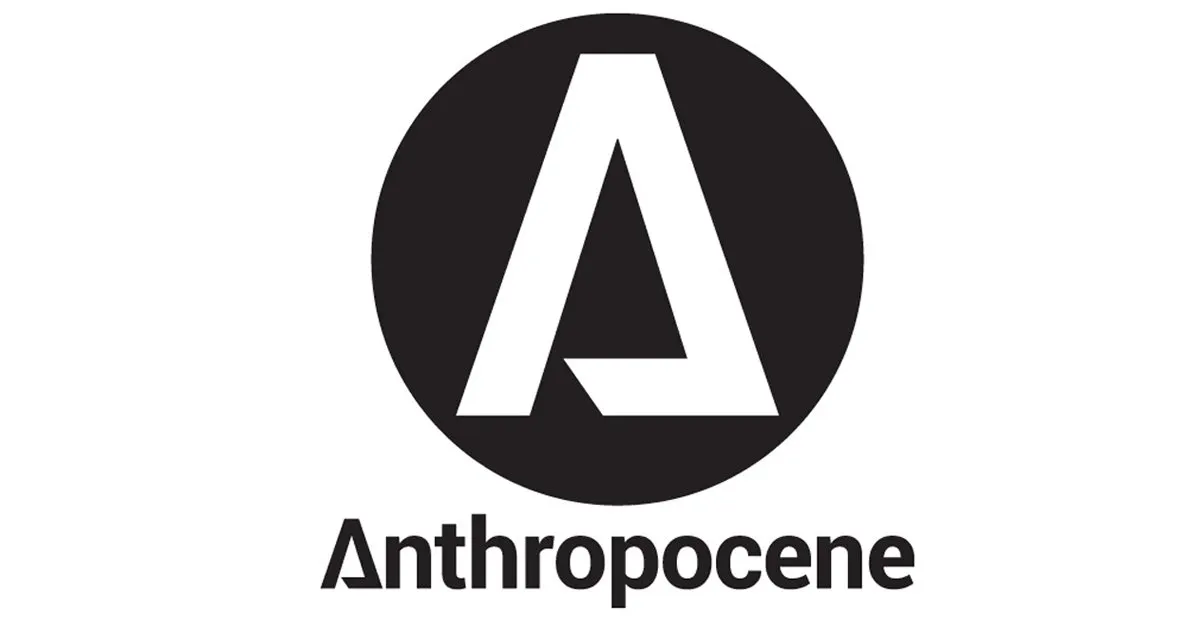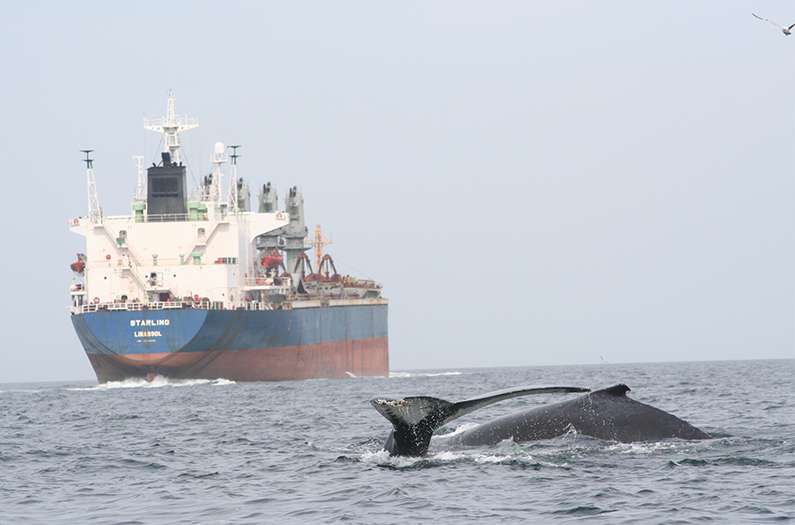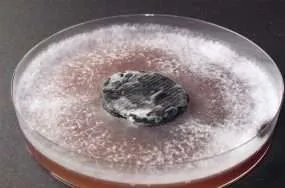Imagine if an interstate freeway was suddenly built through your neighborhood, sending speeding trucks loaded with tons of freight whipping past schools, coffee shops and houses. Now imagine there were no speed limits or stop signs, and the truck drivers couldn’t see anyone the size of a pedestrian.
That’s something like the scenario faced today by the world’s largest whales, according to scientists. A new map of where these marine mammals dwell, and where they overlap with the increasingly crowded trade routes used by massive cargo ships, underscores why encounters between the two are considered a leading source of human-caused whale deaths. It also points to potential ways to reduce the death toll.
“As much as we found cause for concern, we also found some big silver linings,” said University of Washington biology professor Briana Abrahms, the senior author of a new paper in Science magazine that spells out the results.
It’s almost impossible to know how many whales are injured or killed by ships, but the International Whaling Commission has documented nearly a thousand collisions over the last two centuries, with the overwhelming majority since the 1980s. That’s a small fraction of the carnage, since many ships are so massive that crewmembers might not notice when they collide with a whale. In one grim example, a cruise ship arrived in New York City earlier this year with the 13-meter-long body of an endangered sei whale draped across its bow.
Given the increase in shipping, the damage will likely rise unless something changes. Ship traffic on the ocean has quadrupled since the early 1990s, and is projected to more than triple between 2015 and 2050.
To get a clearer picture of where ships and whales are most likely to collide, Abrahms and colleagues built what amount to global traffic maps. They used 435,000 records of locations for four of the largest cetaceans – blue, sperm, fin and humpback – to build a model of where each of these species travels. They used radio signals transmitted by more than 175,000 large ships over five recent years to do the same.
When they compared the two maps, the researchers found hotspots where these two traffic patterns overlapped the most. While it varied somewhat from one species to another, many of these places where concentrated along coastlines and distinct patches of the open ocean.
The Indian Ocean, the western North Pacific near Asia and the Mediterranean contained the highest percentage of danger zones across all four species. Other risky areas included parts of the eastern North Pacific, along the U.S. and Canadian coast, the Atlantic Ocean, the South Pacific and the South China Sea.
Some more localized areas were already known problem places, such as Sri Lanka and the eastern North Pacific (blue whales), Panama and the Arabian Sea (humpbacks), the Canary Islands (sperm whales) and the Mediterranean (fin and sperm whales). The new research also highlighted some places that had previously gone unremarked, including the Azores and long stretches of the South American and southern African coasts.
This laundry list of locations makes it sound like there are few places where these whales can escape ships. And it’s true. Shipping covers 92% of the ranges of these whales, and 15% of the world’s oceans has traffic overlaps on par with coastal California, where ship strikes have been found to pose a serious risk, according to the researchers.
But the scientists also point to evidence that meaningful protections are possible. All the highest risk spots – places that rank in the top 1% of collision danger – cover less than 3% of the ocean, the scientists found. And much of them lie in coastal waters, where individual countries have jurisdiction. That means nations can, in theory, pass new protections without protracted international negotiations and the challenge of enforcing rules on the high seas.
“Trade-offs between industrial and conservation outcomes are not usually this optimal,” said co-author Heather Welch, a scientist with the National Oceanic and Atmospheric Administration. “Oftentimes industrial activities must be greatly limited to achieve conservation goals, or vice versa. In this case, there is a potentially large conservation benefit to whales for not much cost to the shipping industry.”
The scientists, alas, don’t calculate the cost of such regulations. So it’s hard to know just what the economic cost would be for increased whale protections.
The scientists point to several measures that might help: ship speed limits or no-go zones in places heavily used by whales. Go-slow requirements imposed in 2008 along the U.S. Atlantic Coast in areas frequented by endangered North Atlantic right whales were predicted to reduce the risk of deadly collisions by 80% to 90%. Meanwhile, Whale Safe, an organization founded by researchers at the University of California, Santa Barbara, tracks ship speeds along U.S. coastlines, and has used the results to pressure shipping companies to rein in the speeds in important whale habitat.
Getting shippers to accept such limitations might be tough in the cost-sensitive world of global freight transportation, especially in parts of the world where conservationists hold less sway.
But at least now there’s a map to help guide where to put those stop signs and speed limits.
Nisi, et. al. “Ship collision risk threatens whales across the world’s oceans.” Science. Nov. 21, 2024.
Image: Whale Center of New England. Photo taken under NOAA Fisheries Permit #981-1707.







